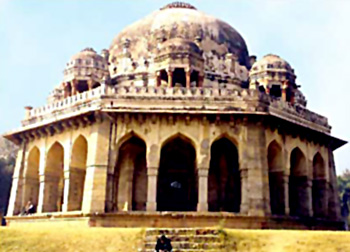 Mubarak Shah ascended the throne without any opposition after the death of his father Khizr Khan. He assumed the title of Shah, and issued coins bearing his name. Mubarak Shah did not accept suzerainty of any foreign power. Like his father, Mubarak too had to undertake disciplinary actions against Jagirdars and nobles to collect revenue from them and bring them to submission. He transferred his governors from one place to another in order to prove that their jagirs or Iqtas were their hereditary property, but a right to be enjoyed under the supremacy of the Sultan.
Mubarak Shah ascended the throne without any opposition after the death of his father Khizr Khan. He assumed the title of Shah, and issued coins bearing his name. Mubarak Shah did not accept suzerainty of any foreign power. Like his father, Mubarak too had to undertake disciplinary actions against Jagirdars and nobles to collect revenue from them and bring them to submission. He transferred his governors from one place to another in order to prove that their jagirs or Iqtas were their hereditary property, but a right to be enjoyed under the supremacy of the Sultan.
This assertion of the right of the Sultan certainly displeased the Jagirdars and governors who, taking advantage of the weakness of latter Tughlaq Sultans, had treated their provinces as their own property. It created trouble for the Sultan who had to fight against his own nobles in order to bring them under his control. The Sultan attacked Badayun, Etawah, Katehar, Gwalior etc. solely for this purpose. But more than that, Mubarak Shah had to face and fight against his foreign enemies. However, Mubarak Shah succeeded in foiling their attempts.
Mubarak Shah was the ablest ruler of the Sayyid dynasty. He saved the Delhi Sultanate from the nominal suzerainty of a foreign power and issued coins in his name. He succeeded in suppressing revolts of his nobles and jagirdars. He also succeeded against the foreign foes each of whom tried to capture Delhi. For thirteen years he fought against his internal and external enemies and succeeded in keeping intact the territory of the Delhi Sultanate though he failed to extend it further. He was quite successful as compared to other rulers of Sayyid dynasty.
This article is a stub. You can enrich by adding more information to it. Send your Write Up to content@indianetzone.com



















